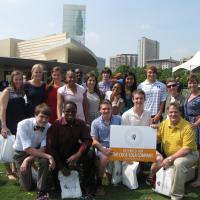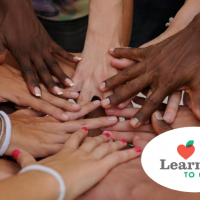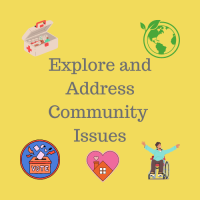An important part of philanthropy is grantmaking, which is a gift of money to a nonprofit organization that is doing good things in the community. This guide defines philanthropy, the nonprofit sector, foundations, and grantmaking and then explores the purpose and parts of the grantmaking process.
In this activity, the group discusses what makes a strong youth council. The team determines what is important to them and their mission. They brainstorm ways to overcome barriers.
These toolkits help youth dive deeply into and take action on specific issues they care about or have identified as areas of need in their community. Each toolkit includes background on the featured issue, community connections, project ideas, and planning guides.
This all-new History of US Philanthropy Timeline features stories of diverse individuals and organizations who have used their time, voice, connections and resources to make an impact on the world. Young people, who are capable changemakers, can examine this history to question and explore the ways philanthropy has created lasting change and changed itself. By sharing stories of the past, we equip and empower youth to shape the story of philanthropy today and in the future.
Recognizing that each person has their own story as complex and meaningful as one's own, we build empathy and connection to others. When we take care of our own worries, needs, and joys, we can be better balanced for collaborating with others for a better world.
- Read more about Caring for Self and Others
- Log in or register to post comments
Self-care and social-emotional well-being are foundational aspects of effective philanthropy. By exploring their own needs and practicing empathy, youth learn to be constructive members of a community from a place of strength and balance. This lesson is best in collaboration with a social worker.
- Read more about Prioritizing Self-Care with a List
- Log in or register to post comments
In this lesson, the learners tell stories of two events in history: a current event from their own point of view and an earlier significant event shared by an older friend or relative. They compare and evaluate how philanthropy responded to each event as well as how they each disrupted education, created fear, brought the community together, and made lasting changes. They also learn about primary and secondary sources and reflect on the lenses through which history is preserved.
- Read more about Living Through History
- Log in or register to post comments
With similar motivations to present-day refugees, African Americans moved north in the mid-1800s to escape slavery and unsafe living conditions in the South. Detroit was an important location where Conductors on the Underground Railroad helped thousands to cross the Detroit River into Canada. In this lesson, we use visual literacy to analyze public art monuments that commemorate historical people and the personal risks that brought people to safety in Canada.
- Read more about Last Stop on the Underground Railroad
- Log in or register to post comments
Settlement houses aimed to improve the lives of community members by addressing social challenges and promoting social welfare. In this lesson, we explore how they addressed the needs of the community where government efforts fell short. Many communities still have similar programs.
- Read more about Settlement Houses Yesterday and Today
- Log in or register to post comments
Explore the role of philanthropy in responding to emergencies, specifically personal and group efforts to support communities during the COVID-19 pandemic.
- Read more about Responding to Covid-19 and Other Public Health Crises
- Log in or register to post comments


